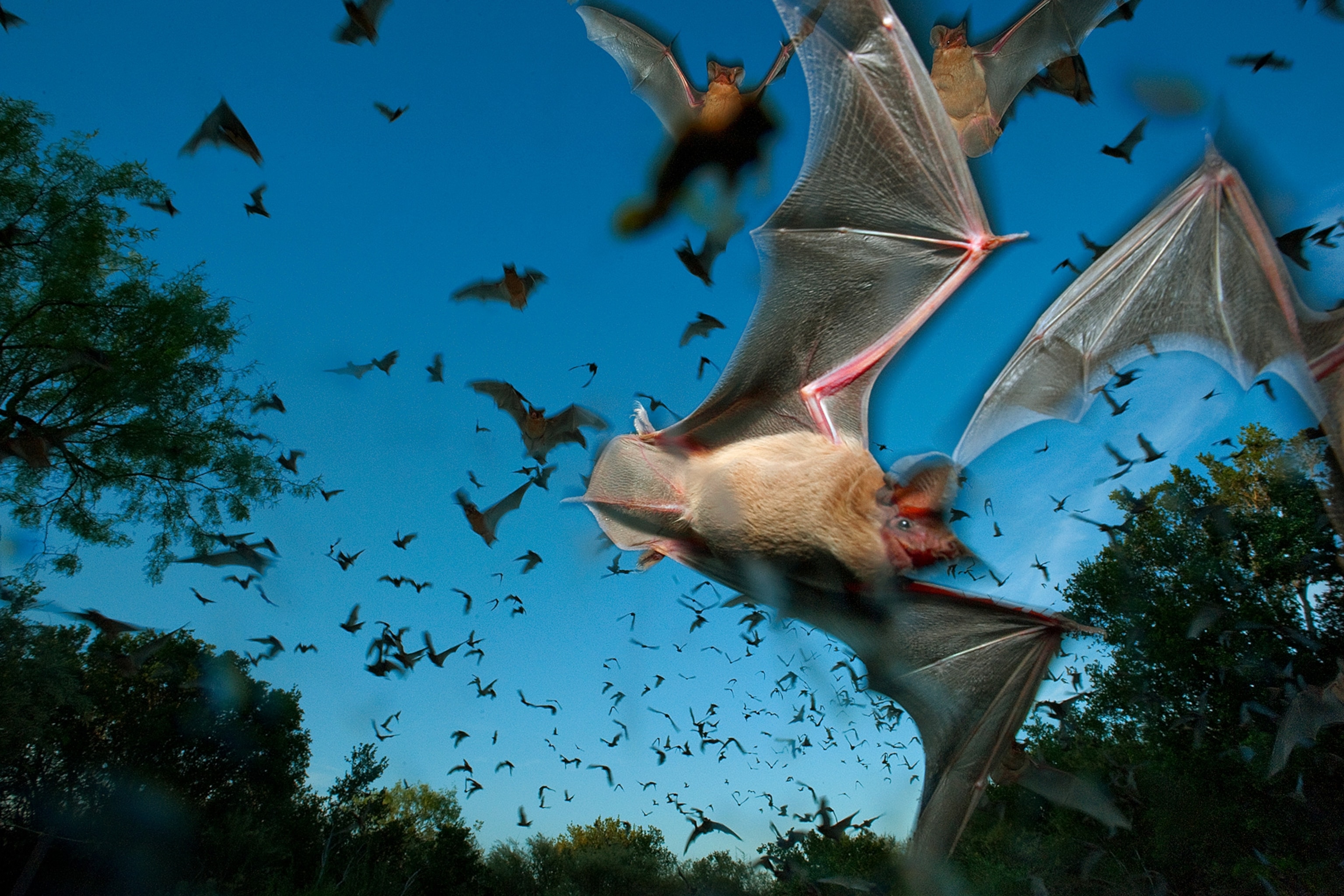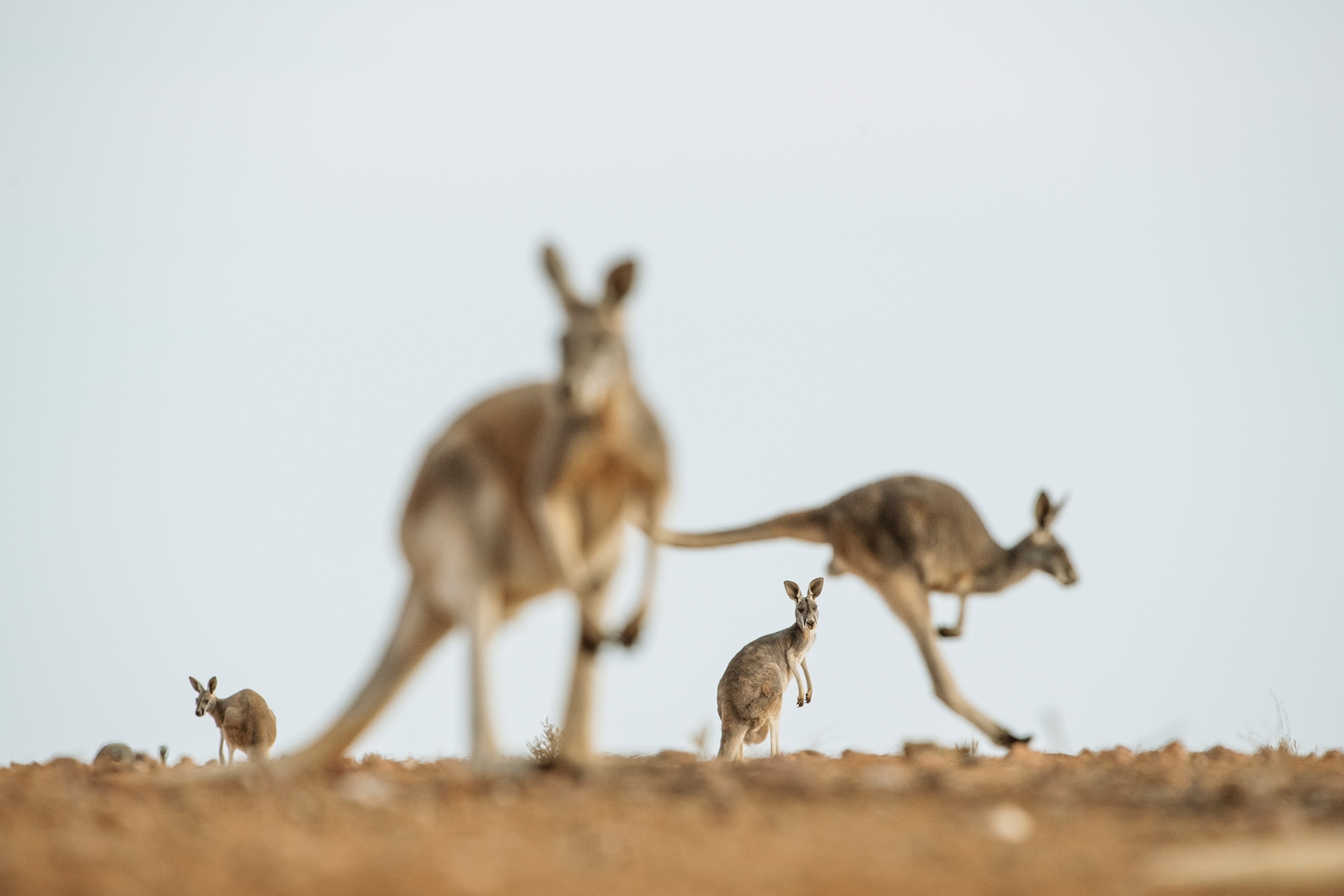Meet the animals that survive extreme desert conditions
Hot, dry, and barren, deserts may seem hostile to life. But many species do just fine in the heat.
There are a lot of ways, it turns out, to cope with unrelenting desert heat.
Rattlesnakes, jackrabbits, and many other desert-dwelling mammals and reptiles are crepuscular, meaning they are most active at dawn and dusk, and they sleep away the hottest hours of the day. Other desert animals, like bats and gray foxes, are nocturnal—they only emerge after dark.
To regulate their temperatures, turkey vultures and black vultures urinate down their legs. As the water in their urine evaporates, it cools them off. Kangaroo rats live in deep underground burrows, which they seal off to keep out midday heat and to recycle the moisture from their own breath. They get all of their water from seeds they collect and store. Gila monsters store water in their bladders, which they can then draw from during hot summers.
Animals adapt over eons to be perfectly suited to their natural environments. But compared to other habitats—the rainforest, the ocean, grasslands—the desert seems so uniquely hostile to life. If desert animals spend so much of their lives avoiding extreme heat in order to stay comfortable, it raises the question: Why live in the desert at all?
But desert life isn’t really any different than life in any other habitat, says Karla Moeller, an ecological physiologist at Arizona State University whose research focuses on how animals survive in extreme environments. While it may seem to us like desert animals are simply tolerating their environment, that isn’t the case at all, she says.
“It isn't that it's harder for them, necessarily, than it is for a fish living in the ocean,” says Moeller. Whether a species spread to the desert or the desert came to them they live (and thrive) there because they adapted to do so. “It isn't like they are just hanging on by a thread,” she says.
It’s important not to project our experience of the desert onto animals, Moeller says. Although it may seem like desert animals try to avoid heat altogether, lots of animals actually need hot temperatures to thrive. If you picked them up and put them in what to us may seem like a much more pleasant environment, like a temperate forest, most would fare poorly.
Gila monsters, for instance, prefer temperatures of around 84 degrees Fahrenheit. Underground burrows, like the ones desert rats hole up in, may be out of the sun, but they aren’t exactly cool—They can still be about 86 degrees Fahrenheit.
But the delicate balance of life in desert habitats is under threat as a result of prolonged drought and rapidly warming temperatures wrought by climate change.
When animals face a challenge in their natural habitats, Moeller explains, “they have three main choices: emigrate, expire, or evolve.”
In California’s Joshua Tree National Park, for example, desert tortoises’ habitat could be reduced by 88 percent if average temperatures rise just 3.6 degrees Fahrenheit. The already threatened animals would have to move higher into the mountains to maintain the temperatures they’re used to, throwing them into smaller, unfamiliar territory with increasingly limited food resources. (Read more about how many species simply can’t evolve fast enough to keep up with the impacts of climate change.)
Here are ten photos of desert animals who live in some of the hottest places on Earth.













